|
|
|

|
|
2016 (vol. 16)
|
|
New record of endolithic algae syn-vivo associated with an Early Cretaceous coral
Bogusław KOŁODZIEJ, Vyara IDAKIEVA, Marin IVANOV & Klaudiusz SALAMON
| HTML  | PDF
| PDF  [1,911 KB]
| DOI:
10.4267/2042/61885 [1,911 KB]
| DOI:
10.4267/2042/61885
|
|
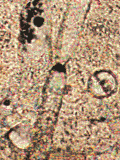 Abstract: Euendolithic microorganisms (boring endoliths) syn-vivo
associated with modern corals are commonly reported, but their fossil record is
extremely rare. This paper reports the new finding recognized in the colonial
scleractinian coral Clausastrea saltensis from
the Upper Barremian of Bulgaria. Large microborings (up to 50 µm, most ca. 15-25
µm in diameter) filled with calcite cement are distributed medially along coral
septa of some corallites. Borings were produced by microeuendoliths
growing from the skeleton interior outward during the
life of the coral host. They are compared to traces produced by
the recent oligophotic filamentous chlorophyte Ostreobium, which is known to be the most common skeleton-dwelling
alga in modern living corals and regarded as neutral or beneficial to the coral. In terms of general morphology, diameter and
distribution pattern, the borings are similar to those recently recognized in
the Early Cretaceous microsolenid coral. Abstract: Euendolithic microorganisms (boring endoliths) syn-vivo
associated with modern corals are commonly reported, but their fossil record is
extremely rare. This paper reports the new finding recognized in the colonial
scleractinian coral Clausastrea saltensis from
the Upper Barremian of Bulgaria. Large microborings (up to 50 µm, most ca. 15-25
µm in diameter) filled with calcite cement are distributed medially along coral
septa of some corallites. Borings were produced by microeuendoliths
growing from the skeleton interior outward during the
life of the coral host. They are compared to traces produced by
the recent oligophotic filamentous chlorophyte Ostreobium, which is known to be the most common skeleton-dwelling
alga in modern living corals and regarded as neutral or beneficial to the coral. In terms of general morphology, diameter and
distribution pattern, the borings are similar to those recently recognized in
the Early Cretaceous microsolenid coral.
|
|
Carnets Geol., vol. 16, no. 27, p. 633-640
Online since December 31, 2016
|
|
Early Cretaceous Toxasterid Echinoid Heteraster from the high Zagros basin, south of Iran
Mazaher YAVARI, Mehdi YAZDI, Hormoz GAHALAVAND, Hossein KAMYABI SHADAN, Mohammad Hossein ADABI & Loïc VILLIER
| HTML  | PDF
| PDF  [8,137 KB]
| DOI:
10.4267/2042/61883 [8,137 KB]
| DOI:
10.4267/2042/61883
|
|
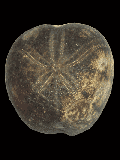 Abstract: Two species of
spatangoid echinoid belonging to Heteraster
Orbigny, 1853, are described from Lower Cretaceous deposits (Gadvan and
Dariyan formations) at the Kuh-e Gadvan and Banesh sections situated in Zagros
Mountains, south of Iran. Heteraster
couloni (Agassiz, 1839) is confirmed in the Barremian and Heteraster
delgadoi (Loriol, 1884) in the late Aptian-Albian of Iran. The
occurrences of Heteraster and other
spatangoid echinoids in Iran show a clear distinction between assemblages from
the southern and northern margins of the Tethys during the Early Cretaceous. Abstract: Two species of
spatangoid echinoid belonging to Heteraster
Orbigny, 1853, are described from Lower Cretaceous deposits (Gadvan and
Dariyan formations) at the Kuh-e Gadvan and Banesh sections situated in Zagros
Mountains, south of Iran. Heteraster
couloni (Agassiz, 1839) is confirmed in the Barremian and Heteraster
delgadoi (Loriol, 1884) in the late Aptian-Albian of Iran. The
occurrences of Heteraster and other
spatangoid echinoids in Iran show a clear distinction between assemblages from
the southern and northern margins of the Tethys during the Early Cretaceous.
|
|
Carnets Geol., vol. 16, no. 26, p. 615-632
Online since December 31, 2016
|
|
Albian and Cenomanian ammonites of the Eastern margin of the Lut block (East Iran)
Javad SHARIFI, Seyed Naser RAISOSSADAT, Maryam MORTAZAVI MEHRIZI & Maryam MOTAMEDALSHARIATI
| HTML  | PDF
| PDF  [1,301 KB]
| DOI:
10.4267/2042/61850 [1,301 KB]
| DOI:
10.4267/2042/61850
|
|
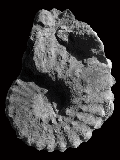 Abstract: Upper Albian and Lower Cenomanian ammonites occur on the eastern margin of the
Lut block in eastern Iran. The ammonite assemblages described herein are from
the Nimbolook and Kerch sections located west of Qayen. The following taxa are
described: Mantelliceras mantelli (J. Sowerby, 1814), Mantelliceras
saxbii (Sharpe, 1857), Mantelliceras sp. 1, Mantelliceras
sp. 2, Mantelliceras sp. 3, Sharpeiceras laticlavium (Sharpe,
1855), Sharpeiceras schlueteri (Hyatt, 1903), Puzosia (Puzosia)
mayoriana (Orbigny, 1841), Hyphoplites costosus C.W. Wright
& E.V. Wright, 1949, Mortoniceras (Mortoniceras)
cf. fallax (Breistroffer, 1940), Mantelliceras cf.
mantelli (J. Sowerby, 1814), Calycoceras (Gentoniceras)
aff. gentoni (Brongniart, 1822), Idiohamites
fremonti (Marcou, 1858), Mariella (Mariella)
sp., Mariella (Mariella)
dorsetensis (Spath, 1926), and Turrilites costatus Lamarck,
1801. The ammonite assemblages clearly indicate a late Albian-middle Cenomanian
age for the Nimbolook section and late Albian-early Cenomanian age for the Kerch
section. Abstract: Upper Albian and Lower Cenomanian ammonites occur on the eastern margin of the
Lut block in eastern Iran. The ammonite assemblages described herein are from
the Nimbolook and Kerch sections located west of Qayen. The following taxa are
described: Mantelliceras mantelli (J. Sowerby, 1814), Mantelliceras
saxbii (Sharpe, 1857), Mantelliceras sp. 1, Mantelliceras
sp. 2, Mantelliceras sp. 3, Sharpeiceras laticlavium (Sharpe,
1855), Sharpeiceras schlueteri (Hyatt, 1903), Puzosia (Puzosia)
mayoriana (Orbigny, 1841), Hyphoplites costosus C.W. Wright
& E.V. Wright, 1949, Mortoniceras (Mortoniceras)
cf. fallax (Breistroffer, 1940), Mantelliceras cf.
mantelli (J. Sowerby, 1814), Calycoceras (Gentoniceras)
aff. gentoni (Brongniart, 1822), Idiohamites
fremonti (Marcou, 1858), Mariella (Mariella)
sp., Mariella (Mariella)
dorsetensis (Spath, 1926), and Turrilites costatus Lamarck,
1801. The ammonite assemblages clearly indicate a late Albian-middle Cenomanian
age for the Nimbolook section and late Albian-early Cenomanian age for the Kerch
section.
|
|
Carnets Geol., vol. 16, no. 25, p. 591-613
Online since December 12, 2016
|
|
Upper Cretaceous non-marine ostracods from the southern High Plateaus, eastern Morocco
Bernard ANDREU, Hamid HADDOUMI & André CHARRIÈRE
| HTML  | PDF
| PDF  [3,505 KB]
| DOI:
10.4267/2042/61848 [3,505 KB]
| DOI:
10.4267/2042/61848
|
|
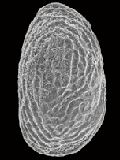 Abstract: The marls of the upper part of the Tigri Formation in the Upper
Cretaceous of the southern High Plateaus, eastern Morocco, reveal non-marine
ostracod faunas from freshwater to oligohaline environments. Despite the poor
specimen preservation, 23 species belonging to 14 genera have been recognized.
The generic assemblages show a global paleobiogeographic distribution both on
Laurasia and Gondwana. Abstract: The marls of the upper part of the Tigri Formation in the Upper
Cretaceous of the southern High Plateaus, eastern Morocco, reveal non-marine
ostracod faunas from freshwater to oligohaline environments. Despite the poor
specimen preservation, 23 species belonging to 14 genera have been recognized.
The generic assemblages show a global paleobiogeographic distribution both on
Laurasia and Gondwana.
|
|
Carnets Geol., vol. 16, no. 24, p. 569-590
Online since December 12, 2016
|
|
Evolution of Miocene siliciclastic deposits in central Tunisia: Case study of the Khechem El Artsouma section
Hanene BELGHITHI, Frédéric BOULVAIN, Chokri YAICH & Anne-Christine DA SILVA
| HTML  | PDF
| PDF  [1,255 KB]
| DOI:
10.4267/2042/61846 [1,255 KB]
| DOI:
10.4267/2042/61846
|
|
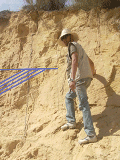 Abstract: After a NE-SW folding phase (Atlasic direction) during the Miocene, siliciclastic sediments from a deltaic environment were deposited in the south-western part of Tunisia while an internal offshore platform formed in the north-eastern part of the country. In this paper we focus on the Khechem El Artsouma Miocene section which is representative of central Tunisia deposits. This area is particularly interesting to study, because it corresponds to a transition zone between deltaic and shallow marine deposits. Facies analysis, magnetic susceptibility measurements and carbonate content measurements are combined to propose a reconstruction of the paleoenvironments and their evolution through the Miocene. Eight facies are identified, from fluviatile, swamp and evaporitic lagoon environments to shore environments. The deposits of the Ain Grab Formation (Langhian) are interpreted as transgressive, followed by the Beglia Formation (Serravalian), which are interpreted as regressive. The whole Saouaf formation (Upper Serravalian - Lower Tortonian) corresponds to a transgressive and regressive sequence. The Djebel Khechem El Artsouma section permits the proposal of a complete sedimentary model for the Miocene deposits from this central Tunisia transition zone. Abstract: After a NE-SW folding phase (Atlasic direction) during the Miocene, siliciclastic sediments from a deltaic environment were deposited in the south-western part of Tunisia while an internal offshore platform formed in the north-eastern part of the country. In this paper we focus on the Khechem El Artsouma Miocene section which is representative of central Tunisia deposits. This area is particularly interesting to study, because it corresponds to a transition zone between deltaic and shallow marine deposits. Facies analysis, magnetic susceptibility measurements and carbonate content measurements are combined to propose a reconstruction of the paleoenvironments and their evolution through the Miocene. Eight facies are identified, from fluviatile, swamp and evaporitic lagoon environments to shore environments. The deposits of the Ain Grab Formation (Langhian) are interpreted as transgressive, followed by the Beglia Formation (Serravalian), which are interpreted as regressive. The whole Saouaf formation (Upper Serravalian - Lower Tortonian) corresponds to a transgressive and regressive sequence. The Djebel Khechem El Artsouma section permits the proposal of a complete sedimentary model for the Miocene deposits from this central Tunisia transition zone.
|
|
Carnets Geol., vol. 16, no. 23, p. 557-568
Online since December 12, 2016
|
|
On the type species of Lingularia, and description of Eolingularia n. gen.
Maria Aleksandra BITNER & Christian C. EMIG
| HTML  | PDF
| PDF  [1,301 KB]
| DOI:
10.4267/2042/56006 [1,301 KB]
| DOI:
10.4267/2042/56006
|
|
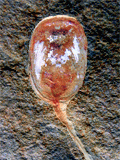 Abstract: The material under study has previously been identified as Lingula krausei, collected from glacial erratics at Cape Rozewie, Poland. All specimens come from glauconitic sandstone of Cenomanian age. Dames
(1874) identified his Lingula sp. as L. krausei which differs in shell outline from Lingula truncata. This species, dedicated to A. Krause, together with L. subovalis, is considered characteristic of the Cenomanian. Several new species and genera have recently been described or redescribed and compared to our specimens, here identified as Lingularia similis. By priority (ICZN,
1999), the type species L. similis is currently synonymized with Lingula krausei. A new genus Eolingularia, within the
Family Lingulidae, is here described, with Lingularia siberica Biernat et Emig,
1993, as type species. This new genus ranges from the Carboniferous to the Triassic in Russia, China, and Spain. Possible synonymies are discussed. Abstract: The material under study has previously been identified as Lingula krausei, collected from glacial erratics at Cape Rozewie, Poland. All specimens come from glauconitic sandstone of Cenomanian age. Dames
(1874) identified his Lingula sp. as L. krausei which differs in shell outline from Lingula truncata. This species, dedicated to A. Krause, together with L. subovalis, is considered characteristic of the Cenomanian. Several new species and genera have recently been described or redescribed and compared to our specimens, here identified as Lingularia similis. By priority (ICZN,
1999), the type species L. similis is currently synonymized with Lingula krausei. A new genus Eolingularia, within the
Family Lingulidae, is here described, with Lingularia siberica Biernat et Emig,
1993, as type species. This new genus ranges from the Carboniferous to the Triassic in Russia, China, and Spain. Possible synonymies are discussed.
|
|
Carnets Geol., vol. 16, no. 22, p. 543-555
Online since December 12, 2016
|
|
Albian rudist biostratigraphy
(Bivalvia), Comanche shelf to shelf margin, Texas
Robert W. SCOTT, Whitney CAMPBELL, Rachel HOJNACKI, Yulin WANG & Xin LAI
| HTML  | PDF
| PDF  [4,372 KB]
| DOI:
10.4267/2042/61701 [4,372 KB]
| DOI:
10.4267/2042/61701
|
|
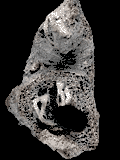 Abstract: Rudists were widespread and locally abundant carbonate producers on the Early
Cretaceous Comanche Shelf from Florida to Texas, and on Mexican atolls. As
members of the Caribbean Biogeographic Province, their early ancestors emigrated
from the Mediterranean Province and subsequently evolved independently.
Comanchean rudists formed biostromes and bioherms on the shelf interior and at
the shelf margin. Carbonate stratigraphic units of the Comanche Shelf record
rudist evolution during the Barremian through the Albian ages and an established
zonal scheme is expanded. Abstract: Rudists were widespread and locally abundant carbonate producers on the Early
Cretaceous Comanche Shelf from Florida to Texas, and on Mexican atolls. As
members of the Caribbean Biogeographic Province, their early ancestors emigrated
from the Mediterranean Province and subsequently evolved independently.
Comanchean rudists formed biostromes and bioherms on the shelf interior and at
the shelf margin. Carbonate stratigraphic units of the Comanche Shelf record
rudist evolution during the Barremian through the Albian ages and an established
zonal scheme is expanded.
This study documents new Albian rudist occurrences from the Middle-Upper Albian
Fredericksburg and Washita groups in Central and West Texas. Rudists in cores at
and directly behind the shelf margin southeast of Austin and San Antonio, Texas,
complement the rudist zonation that is integrated with ammonites and
foraminifers. These new rudist data test long-held correlations of the Edwards
Group with both the Fredericksburg and Washita groups based solely on
lithologies. Rudist and foraminifer biostratigraphy indicate that the Edwards
Group is coeval with the Fredericksburg not the Washita Group.
In West Texas sections Caprinuloidea romeri
occurs at the top of the Fredericksburg Group in the Fort Terrett Formation
approximately 3 meters below the iron-stained hardground subaerial exposure
surface. It is overlain by the Washita Group with the ammonite Eopachydiscus
marcianus Zone. Caprinuloidea romeri
is also documented from the type cored section of the Person Formation in the
upper part of the Edwards Group. These species allow a precise correlation of
the subsurface Person Formation in Central Texas with the Ft. Terrett Formation
cropping out in West Texas. This evidence together with foraminifer and ammonite
zones demonstrates that the Person Formation is coeval with Fredericksburg units
underlying the basal Washita sequence boundary Al Sb Wa1. The upper Albian
Washita Group Kimbleia and Mexicaprina caprinid zones overly the Caprinuloidea Zone and the successive Washita mortonicerid ammonite zones.
|
|
Carnets Geol., vol. 16, no. 21, p. 513-541
Online since November 11, 2016
|
|
Jurassic-Cretaceous transition on the Getic carbonate platform (Southern Carpathians, Romania): Benthic foraminifera and algae
Cristian Victor MIRCESCU, George PLEŞ, Ioan I. BUCUR & Bruno GRANIER
| HTML  | PDF
| PDF  [4,772 KB]
| DOI:
10.4267/2042/61824 [4,772 KB]
| DOI:
10.4267/2042/61824
|
|
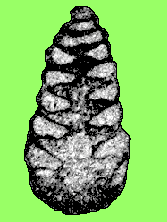 Abstract: The carbonate succession of the Piatra Craiului Massif, i.e., the eastern
part of the Getic carbonate platform (Southern Carpathians, Romania), comprises
reefal and peritidal limestones that contain a diverse microfossil assemblage
composed mainly of calcareous green algae and benthic foraminifera. The
biostratigraphically most significant benthic foraminifera found in the several
sections studied are described; some (Anchispirocyclina lusitanica, Neokilianina
rahonensis, Bramkampella arabica, Everticyclammina praekelleri)
are reported for the first time in this area. Hence, assemblages of both
foraminifera and calcareous algae characterize three biostratigraphic intervals
in the studied succession, the Kimmeridgian - lower Tithonian, the upper
Tithonian - lower Berriasian, and the upper Berriasian - ? lower Valanginian
intervals. The main microfacies types (bioclastic rudstone, coral-microbial
boundstone, bioclastic grainstone, interbedded mudstones and wackestones with
cyanobacteria nodules) as well as both the foraminifera and the calcareous algae
are paleoecological indicators that may contribute to the decipherment of the
depositional environments and to building a depositional model for the eastern
part of the Getic carbonate platform at the Late Jurassic-Early Cretaceous
transition. Abstract: The carbonate succession of the Piatra Craiului Massif, i.e., the eastern
part of the Getic carbonate platform (Southern Carpathians, Romania), comprises
reefal and peritidal limestones that contain a diverse microfossil assemblage
composed mainly of calcareous green algae and benthic foraminifera. The
biostratigraphically most significant benthic foraminifera found in the several
sections studied are described; some (Anchispirocyclina lusitanica, Neokilianina
rahonensis, Bramkampella arabica, Everticyclammina praekelleri)
are reported for the first time in this area. Hence, assemblages of both
foraminifera and calcareous algae characterize three biostratigraphic intervals
in the studied succession, the Kimmeridgian - lower Tithonian, the upper
Tithonian - lower Berriasian, and the upper Berriasian - ? lower Valanginian
intervals. The main microfacies types (bioclastic rudstone, coral-microbial
boundstone, bioclastic grainstone, interbedded mudstones and wackestones with
cyanobacteria nodules) as well as both the foraminifera and the calcareous algae
are paleoecological indicators that may contribute to the decipherment of the
depositional environments and to building a depositional model for the eastern
part of the Getic carbonate platform at the Late Jurassic-Early Cretaceous
transition.
|
|
Carnets Geol., vol. 16, no. 20, p. 491-512
Online since October 24, 2016
|
|
The Weberg and Warm
Spring Members of the Snowshoe Formation in Suplee area, Oregon: Lithofacies and
Aalenian-early Bajocian ammonoid zonation
David G. TAYLOR
| HTML  | PDF
| PDF  [2,653 KB]
| DOI:
10.4267/2042/61389 [2,653 KB]
| DOI:
10.4267/2042/61389
|
|
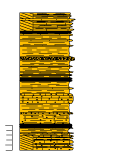 Abstract: This paper documents the stratigraphic information
upon which an ammonoid zonation from the lower part of the Snowshoe Formation in
the Suplee area was originally established (Taylor, 1988). Ammonoid ranges from 22 measured stratigraphic sections reveal about 60
ammonoid species distributed among eight zones encompassing the late Aalenian
and part of the early Bajocian stages. The
sediments are dominantly volcaniclastic and, as a result, there are numerous
tuff beds in the succession. As noted in Taylor (1982) the principal tuff
beds (herein designated as units A through F) can be used jointly with the
ammonite sequence to give precise correlations from section to section.
Utilizing the ammonoids, tuff beds, and facies in combination gives a graphic
representation of the westward transgression of the Snowshoe Formation as it
enveloped an irregular topography, and lapped onto the topographically high
Grindstone High to the west. The
ammonoid zonation is significant in that it gives a standard of reference for
the biochronology of the late Aalenian and early Bajocian ammonoids in the North
American Western Cordillera. Abstract: This paper documents the stratigraphic information
upon which an ammonoid zonation from the lower part of the Snowshoe Formation in
the Suplee area was originally established (Taylor, 1988). Ammonoid ranges from 22 measured stratigraphic sections reveal about 60
ammonoid species distributed among eight zones encompassing the late Aalenian
and part of the early Bajocian stages. The
sediments are dominantly volcaniclastic and, as a result, there are numerous
tuff beds in the succession. As noted in Taylor (1982) the principal tuff
beds (herein designated as units A through F) can be used jointly with the
ammonite sequence to give precise correlations from section to section.
Utilizing the ammonoids, tuff beds, and facies in combination gives a graphic
representation of the westward transgression of the Snowshoe Formation as it
enveloped an irregular topography, and lapped onto the topographically high
Grindstone High to the west. The
ammonoid zonation is significant in that it gives a standard of reference for
the biochronology of the late Aalenian and early Bajocian ammonoids in the North
American Western Cordillera.
|
|
Carnets Geol., vol. 16, no. 19, p. 449-490
Online since September 12, 2016
|
|
Plio-Pleistocene Ostracods from sedimentary sections along the
eastern edge of Cape Bon (Wadi Lebna section, Eastern Tunisia)
Rim TEMANI, Driss NACHITE, Francesco SCIUTO, Saloua RAZGALLAH, Ratiba BEKKALI, Khayati HAYET & Nadia GAALOUL
| HTML  | PDF
| PDF  [3,155 KB]
| DOI:
10.4267/2042/61387 [3,155 KB]
| DOI:
10.4267/2042/61387
|
|
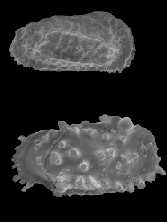 Abstract: This paper presents for the first time a detailed study
of ostracods in the Upper Pliocene-Lower Pleistocene deposits of Wadi Lebna
(Cape Bon eastern edge, northeastern Tunisia). The quantitative and qualitative
analyses document the evolution of this area from a marine environment dominated
by relatively deep or circalittoral species at the base of the succession,
passing progressively up into shallower environments, and at the top
infralittoral coastal environments. Particularly important from the ecological
point of view is the presence
in some samples of Bythocythere turgida. This species indicates
deposition of these sediments during the cold phases of the Early Pleistocene. Abstract: This paper presents for the first time a detailed study
of ostracods in the Upper Pliocene-Lower Pleistocene deposits of Wadi Lebna
(Cape Bon eastern edge, northeastern Tunisia). The quantitative and qualitative
analyses document the evolution of this area from a marine environment dominated
by relatively deep or circalittoral species at the base of the succession,
passing progressively up into shallower environments, and at the top
infralittoral coastal environments. Particularly important from the ecological
point of view is the presence
in some samples of Bythocythere turgida. This species indicates
deposition of these sediments during the cold phases of the Early Pleistocene.
|
|
Carnets Geol., vol. 16, no. 18, p. 431-447
Online since September 12, 2016
|
|
Comments on "Estimating the impact of early diagenesis on isotope records in shallow-marine carbonates: A case study from the Urgonian platform in western Swiss Jura" by A. Godet
et al. [Palaeogeography Palaeoclimatology Palaeoecology 454 (2016) 125-138]
Bruno GRANIER, Bernard CLAVEL & Jean CHAROLLAIS
| HTML  | PDF
| PDF  [806 KB]
| DOI:
10.4267/2042/61385 [806 KB]
| DOI:
10.4267/2042/61385
|
|
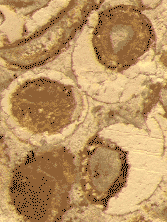 Abstract: A recent paper by Godet
et al. on Urgonian carbonates from
the Swiss Jura concluded that diagenesis may hinder chemostratigraphic
correlations of deep- to shallow-water facies. Although we agree with this
conclusion we question their arguments and interpretations. These authors
correctly identified diagenesis as the key factor, but we question the timing
of events in their paragenetic sequence. In particular, they reported the
leaching of originally calcitic oolitic cortices but failed to discuss this
puzzling feature properly. In addition, the backbone of their argument is the
stratigraphic correlation of a specific sequence from three dominantly
shallow-water sections together with a basinal reference section. However, a
reliable alternative biostratigraphic framework shows that this attempt of
long-distance correlation might be erroneous. Abstract: A recent paper by Godet
et al. on Urgonian carbonates from
the Swiss Jura concluded that diagenesis may hinder chemostratigraphic
correlations of deep- to shallow-water facies. Although we agree with this
conclusion we question their arguments and interpretations. These authors
correctly identified diagenesis as the key factor, but we question the timing
of events in their paragenetic sequence. In particular, they reported the
leaching of originally calcitic oolitic cortices but failed to discuss this
puzzling feature properly. In addition, the backbone of their argument is the
stratigraphic correlation of a specific sequence from three dominantly
shallow-water sections together with a basinal reference section. However, a
reliable alternative biostratigraphic framework shows that this attempt of
long-distance correlation might be erroneous.
|
|
Carnets Geol., vol. 16, no. 17, p. 417-429
Online since August 5, 2016
|
|
Taxonomy and distribution of the Cretaceous coral genus Eosiderastrea
Hannes LÖSER
| HTML  | PDF
| PDF  [6,545 KB]
| DOI:
10.4267/2042/60677 [6,545 KB]
| DOI:
10.4267/2042/60677
|
|
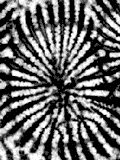 Abstract: The
new genus Eosiderastrea Löser, 2016, was established for
Cretaceous corals formerly assigned to the extant coral genus Diploastrea.
It represents the oldest member of the Family Siderastraeidae. The genus is
characterised by an astreoid arrangement, occasionally although some have a
plocoid or a cerioid calicular arrangement, and a sub-regular hexameral,
heptameral, octameral or decameral septal symmetry. The septal blades are made
of medium-sized trabeculae. Synapticulae are present. Almost a hundred
specimens were examined, among them numerous type specimens. In total, 26
Cretaceous species were separated. Fifteen species were assigned to formally
established species, three species were compared to one of these species, two
species were described as new and the remaining six species were reported in
open nomenclature. The genus occurs in the Cretaceous worldwide and ranges from
the late Valanginian to the Santonian. It shows its greatest diversity in the earliest
Aptian and early to middle Cenomanian. Abstract: The
new genus Eosiderastrea Löser, 2016, was established for
Cretaceous corals formerly assigned to the extant coral genus Diploastrea.
It represents the oldest member of the Family Siderastraeidae. The genus is
characterised by an astreoid arrangement, occasionally although some have a
plocoid or a cerioid calicular arrangement, and a sub-regular hexameral,
heptameral, octameral or decameral septal symmetry. The septal blades are made
of medium-sized trabeculae. Synapticulae are present. Almost a hundred
specimens were examined, among them numerous type specimens. In total, 26
Cretaceous species were separated. Fifteen species were assigned to formally
established species, three species were compared to one of these species, two
species were described as new and the remaining six species were reported in
open nomenclature. The genus occurs in the Cretaceous worldwide and ranges from
the late Valanginian to the Santonian. It shows its greatest diversity in the earliest
Aptian and early to middle Cenomanian.
|
|
Carnets Geol., vol. 16, no. 16, p. 383-416
Online since July 7, 2016
|
|
Ivaldiceras, a new genus of heteromorphic ammonites from the Lower Aptian of southeast France
Gérard DELANOY, Cyril BAUDOUIN, Marc BOSELLI & Emmanuel PENAGÉ
| HTML  | PDF
| PDF  [2,479 KB]
| DOI:
10.4267/2042/60676 [2,479 KB]
| DOI:
10.4267/2042/60676
|
|
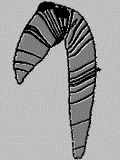 Abstract: New investigations in
the Vocontian Lower Aptian deposits resulted in the discovery of
very rare specimens of heteromorphic ammonites whose specific morphological
and ornamental features have led to the erection of Ivaldiceras
gen. nov. Represented
by a very limited number of
specimens this new genus consists
of two species: I. baratteroi gen. & sp. nov. and I. divajeuensis
gen. & sp. nov. The suprageneric
position of the new genus is
difficult to determine because of the poor preservation of its sutural elements and the
incomplete state of
the specimens. The genus is tentatively assigned to the Family Macroscaphitidae Hyatt,
1900, pending the study of better preserved material. Abstract: New investigations in
the Vocontian Lower Aptian deposits resulted in the discovery of
very rare specimens of heteromorphic ammonites whose specific morphological
and ornamental features have led to the erection of Ivaldiceras
gen. nov. Represented
by a very limited number of
specimens this new genus consists
of two species: I. baratteroi gen. & sp. nov. and I. divajeuensis
gen. & sp. nov. The suprageneric
position of the new genus is
difficult to determine because of the poor preservation of its sutural elements and the
incomplete state of
the specimens. The genus is tentatively assigned to the Family Macroscaphitidae Hyatt,
1900, pending the study of better preserved material.
|
|
Carnets Geol., vol. 16, no. 15, p. 369-381
Online since July 7, 2016
|
|
Aptian ammonites from Mazapil, Zacatecas State (north-central Mexico) studied by Burckhardt in 1906: A revision
Ricardo BARRAGÁN, Josep Anton MORENO-BEDMAR & Celestina GONZÁLEZ-ARREOLA
| HTML  | PDF
| PDF  [2,306 KB]
| DOI:
10.4267/2042/60667 [2,306 KB]
| DOI:
10.4267/2042/60667
|
|
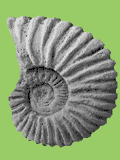 Abstract: Twelve
specimens of Aptian ammonites reported and drawn by Burckhardt in 1906,
from the Mazapil area (Zacatecas State, north-central Mexico), are reviewed for
taxonomical purposes. The work by Burckhardt was the first report
of Aptian ammonoids in Mexico. In addition, it represents the only record of
Aptian ammonites known from Zacatecas State. The taxonomic review of the
specimens allows for the recognition of Dufrenoyia
sp., Colombiceras spathi Humphrey,
Colombiceras mexicanus (Humphrey)
n. comb., Colombiceras sp., Colombiceras
spp., and Acanthohoplites aff. bigoureti
(Seunes). This ammonite assemblage is indicative of a stratigraphic
range that spans the uppermost lower Aptian to the upper Aptian interval. Abstract: Twelve
specimens of Aptian ammonites reported and drawn by Burckhardt in 1906,
from the Mazapil area (Zacatecas State, north-central Mexico), are reviewed for
taxonomical purposes. The work by Burckhardt was the first report
of Aptian ammonoids in Mexico. In addition, it represents the only record of
Aptian ammonites known from Zacatecas State. The taxonomic review of the
specimens allows for the recognition of Dufrenoyia
sp., Colombiceras spathi Humphrey,
Colombiceras mexicanus (Humphrey)
n. comb., Colombiceras sp., Colombiceras
spp., and Acanthohoplites aff. bigoureti
(Seunes). This ammonite assemblage is indicative of a stratigraphic
range that spans the uppermost lower Aptian to the upper Aptian interval.
|
|
Carnets Geol., vol. 16, no. 14, p. 355-367
Online since June 23, 2016
|
|
Possible vertebrate coprolites from the Upper Cretaceous (Coniacian) of the Sudetes Mountains (southern Poland)
Tomasz BRACHANIEC & Anna WIECZOREK
| HTML  | PDF
| PDF  [559 KB]
| DOI:
10.4267/2042/60665 [559 KB]
| DOI:
10.4267/2042/60665
|
|
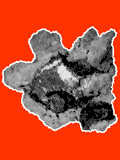 Abstract: Possible
coprolites from the Upper Cretaceous (Coniacian) of Waliszów Stary in the Sudetes
Mountains (southern Poland) are described for the first time. They are
relatively small, irregular in outline, and preserved as goethite, limonite,
siderite and hematite. Although it is difficult to identify the producer of
these coprolites, they were most probably formed by some fish. Abstract: Possible
coprolites from the Upper Cretaceous (Coniacian) of Waliszów Stary in the Sudetes
Mountains (southern Poland) are described for the first time. They are
relatively small, irregular in outline, and preserved as goethite, limonite,
siderite and hematite. Although it is difficult to identify the producer of
these coprolites, they were most probably formed by some fish.
|
|
Carnets Geol., vol. 16, no. 13, p. 349-354
Online since June 23, 2016
|
|
Late Albian cactus in shallow carbonate shelf, West Texas
Robert W. SCOTT, Zexuan WANG, Xin LAI & Yulun WANG
| HTML  | PDF
| PDF  [665 KB]
| DOI:
10.4267/2042/60122 [665 KB]
| DOI:
10.4267/2042/60122
|
|
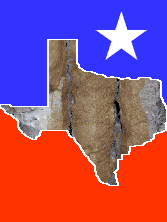 Abstract: Well-preserved vertical molds of a stalk-like fossil are in growth position in
the upper part of the Upper Albian Fort Lancaster Formation exposed in West
Texas. The Fort Lancaster Formation is the uppermost Albian carbonate unit
deposited on the shallow water Barremian-early Cenomanian Comanche shelf. The
Fort Lancaster represents one long-term transgressive-regressive cycle capped by
a regional unconformity overlain by lower Cenomanian deeper water Del Rio Shale. Abstract: Well-preserved vertical molds of a stalk-like fossil are in growth position in
the upper part of the Upper Albian Fort Lancaster Formation exposed in West
Texas. The Fort Lancaster Formation is the uppermost Albian carbonate unit
deposited on the shallow water Barremian-early Cenomanian Comanche shelf. The
Fort Lancaster represents one long-term transgressive-regressive cycle capped by
a regional unconformity overlain by lower Cenomanian deeper water Del Rio Shale.
The erect stalk-like molds are up to 1 m tall and about 6 cm in diameter. The
mold walls are composed of six pairs of angular ridges and grooves evenly spaced
at an angle of 60° to each other. The ridge crests are dotted by paired ringed
depressions with small central nodes; these negative impressions indicate the
presence of oval rings with small depressions inside of each ring. The diameter
of the stalk is the same at its base as at its top indicating that growth did
not expand the organism but extended it upward. These stalk-like organisms
appear to be rooted on disconformable bedding surfaces that were exposed to the
atmosphere. Carbon isotope data shows the classic negative shift below subaerial
contacts. Subsequently sea level rose and muddy carbonate sediment buried the
stalk. The absence of original wall material suggests that the wall was composed
of readily decayed or dissolved material such as organic matter or aragonite.
Stalk-like organisms of this size and shape are rare and potential types are
cacti, plant reeds, Porifera, or Scleractinian Cnidaria.
|
|
Carnets Geol., vol. 16, no. 12, p. 337-346
Online since May 19, 2016
|
|
The taxonomy of middle Miocene red algae from the Gârbova de Sus Formation (Transylvanian Basin, Romania)
Ramona CHELARU & Ioan I. BUCUR
| HTML  | PDF
| PDF  [3,439 KB]
| DOI:
10.4267/2042/60121 [3,439 KB]
| DOI:
10.4267/2042/60121
|
|
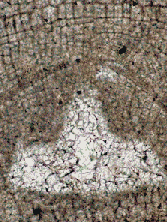 Abstract: This
study describes seventeen non-geniculate coralline algal species (orders Corallinales,
Hapalidiales and Sporolithales) from the middle Miocene (lower-middle Badenian)
red-algal limestones of the Transylvanian Basin, Gârbova
de Sus Formation. For the description and identification at species level, we
follow the common diagnostic features used for fossil species and some
characters that are used as diagnostic for modern species (roof morphology for
asexual conceptacles, the presence/absence of a layer of elongated cells below
sporangial compartments and number of cells in paraphyses for Sporolithon,
and measurements of gametangial and carposporangial conceptacles). Female
conceptacles of Spongites fruticulosus
Kützing are for the first time described in fossil material. We propose
the attribution of Lithophyllum
platticarpum Maslov to Spongites
fruticulosus Kützing as a gametangial thallus with male
conceptacles. Abstract: This
study describes seventeen non-geniculate coralline algal species (orders Corallinales,
Hapalidiales and Sporolithales) from the middle Miocene (lower-middle Badenian)
red-algal limestones of the Transylvanian Basin, Gârbova
de Sus Formation. For the description and identification at species level, we
follow the common diagnostic features used for fossil species and some
characters that are used as diagnostic for modern species (roof morphology for
asexual conceptacles, the presence/absence of a layer of elongated cells below
sporangial compartments and number of cells in paraphyses for Sporolithon,
and measurements of gametangial and carposporangial conceptacles). Female
conceptacles of Spongites fruticulosus
Kützing are for the first time described in fossil material. We propose
the attribution of Lithophyllum
platticarpum Maslov to Spongites
fruticulosus Kützing as a gametangial thallus with male
conceptacles.
|
|
Carnets Geol., vol. 16, no. 11, p. 307-336
Online since May 19, 2016
|
|
Environmental control on shell size of Middle Triassic bivalve Plagiostoma
Krzysztof R. BROM, Robert NIEDŹWIEDZKI, Tomasz BRACHANIEC, Bruno FERRÉ & Mariusz A. SALAMON
| HTML  | PDF
| PDF  [705 KB]
| DOI:
10.4267/2042/60118 [705 KB]
| DOI:
10.4267/2042/60118
|
|
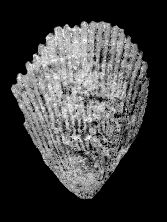 Abstract: Fossil shells of the marine bivalve Plagiostoma
striatum Schlotheim sampled from the Middle Triassic (so-called
Muschelkalk) of Poland demonstrate that, under unfavourable environmental
conditions, this species commonly occurring in Triassic German basins exhibits a
dwarfed shell. As a consequence of a marine regression episode resulting in a
significant increase of salinity and a partial emersion of seafloor these bivalves vanished. The next
transgressive pulse caused a re-emergence of these bivalves. They were initially
characterized by half-size shells than
in the population living prior to the regression episode and, subsequently,
during progressive transgression, their shells returned to
normal size. Coincidence between eustatic curve and changes in bivalve shell
size and their disappearance may be attributed also to biotic interactions, such
as a biotic collapse in primary bioproductivity or/and a competition for space
or any other resources due to shelf habitat loss during regressive periods. Abstract: Fossil shells of the marine bivalve Plagiostoma
striatum Schlotheim sampled from the Middle Triassic (so-called
Muschelkalk) of Poland demonstrate that, under unfavourable environmental
conditions, this species commonly occurring in Triassic German basins exhibits a
dwarfed shell. As a consequence of a marine regression episode resulting in a
significant increase of salinity and a partial emersion of seafloor these bivalves vanished. The next
transgressive pulse caused a re-emergence of these bivalves. They were initially
characterized by half-size shells than
in the population living prior to the regression episode and, subsequently,
during progressive transgression, their shells returned to
normal size. Coincidence between eustatic curve and changes in bivalve shell
size and their disappearance may be attributed also to biotic interactions, such
as a biotic collapse in primary bioproductivity or/and a competition for space
or any other resources due to shelf habitat loss during regressive periods.
|
|
Carnets Geol., vol. 16, no. 10, p. 297-305
Online since May 21, 2016
|
|
Lithostratigraphic, paleoenvironmental and sequential evolution of the Cenomanian-Lower Turonian in the Guir area (western Algeria)
Madani BENYOUCEF, Christian MEISTER, Kaddour MEBARKI, Émilie LÄNG, Mohammed ADACI, Lionel CAVIN, Fatima-Zohra MALTI, Djamila ZAOUI, Amine CHERIF & Mustapha BENSALAH
| HTML  | PDF
| PDF  [2,328 KB]
| DOI:
10.4267/2042/59926 [2,328 KB]
| DOI:
10.4267/2042/59926
|
|
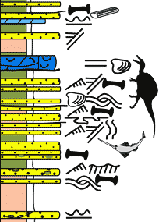 Abstract: The lithostratigraphy, paleoenvironment and sequence
stratigraphy of the Cretaceous succession outcropping at the southern foot of
the Saharan Atlas (south-western Algeria) are discussed in this work. Our current study focuses on the analysis of fifteen sections distributed
along to the northern and southern limits of the Guir Basin, between the
Ben-Zireg to the East and the Meridja-Boukais axis to the West. In this area,
three lithostratigraphic formations were identified and interpreted from an
environmental and a sequential points of view: 1 - The lower "Grès
rouges" Formation attributed to the Lower Cenomanian, is dominated by
fluvial or coastal detrital deposits; 2 - The middle "Marnes à gypse inférieures"
Formation assigned to the Lower-Middle Cenomanian is characterized by littoral
setting with some storm influences, especially towards the base; 3 - The upper
"Calcaires de Sidi Mohamed Ben Bouziane" Formation of upper
Cenomanian-early Turonian in age, is represents a laterally extensive, shallow
carbonate platform environment. The three formations constitute an overall
transgressive megasequence built of a number of transgressive-regressive minor
sequences. The opening of the deposits towards the North is confirmed by the
organization of the lithostratigraphic units and by the Tethyan
paleobiogeographic affinity of the echinoids and bivalves, and especially the
occurrence of Neolobites vibrayeanus ammonite. Abstract: The lithostratigraphy, paleoenvironment and sequence
stratigraphy of the Cretaceous succession outcropping at the southern foot of
the Saharan Atlas (south-western Algeria) are discussed in this work. Our current study focuses on the analysis of fifteen sections distributed
along to the northern and southern limits of the Guir Basin, between the
Ben-Zireg to the East and the Meridja-Boukais axis to the West. In this area,
three lithostratigraphic formations were identified and interpreted from an
environmental and a sequential points of view: 1 - The lower "Grès
rouges" Formation attributed to the Lower Cenomanian, is dominated by
fluvial or coastal detrital deposits; 2 - The middle "Marnes à gypse inférieures"
Formation assigned to the Lower-Middle Cenomanian is characterized by littoral
setting with some storm influences, especially towards the base; 3 - The upper
"Calcaires de Sidi Mohamed Ben Bouziane" Formation of upper
Cenomanian-early Turonian in age, is represents a laterally extensive, shallow
carbonate platform environment. The three formations constitute an overall
transgressive megasequence built of a number of transgressive-regressive minor
sequences. The opening of the deposits towards the North is confirmed by the
organization of the lithostratigraphic units and by the Tethyan
paleobiogeographic affinity of the echinoids and bivalves, and especially the
occurrence of Neolobites vibrayeanus ammonite.
|
|
Carnets Geol., vol. 16, no. 9, p. 271-296
Online since April 14, 2016
|
|
Some steps toward a new story for the Jurassic - Cretaceous transition in Mount Lebanon
Bruno GRANIER, Christopher TOLAND, Raymond GÈZE, Dany AZAR & Sibelle MAKSOUD
| HTML  | PDF
| PDF  [2,066 KB]
| DOI:
10.4267/2042/59924
[2,066 KB]
| DOI:
10.4267/2042/59924
|
|
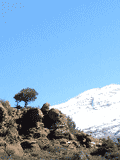 Abstract:
The stratigraphic framework of the Upper Jurassic and Lower Cretaceous strata of
Lebanon that dates back to Dubertret's publications required either
consolidation or full revision. The preliminary results of our investigations in
the Mount Lebanon region are presented here. We provide new micropaleontological
and sedimentological information on the Salima Oolitic Limestones, which is
probably an unconformity-bounded unit (possibly Early Valanginian in age), and
the "Grès du Liban" (Barremian in age). Our revised bio- and
holostratigraphic interpretations and the new age assignations lead us to
emphasize the importance of the two hiatuses in the sedimentary record below and
above the Salima, i.e., at the transition from the Jurassic to the
Cretaceous. Abstract:
The stratigraphic framework of the Upper Jurassic and Lower Cretaceous strata of
Lebanon that dates back to Dubertret's publications required either
consolidation or full revision. The preliminary results of our investigations in
the Mount Lebanon region are presented here. We provide new micropaleontological
and sedimentological information on the Salima Oolitic Limestones, which is
probably an unconformity-bounded unit (possibly Early Valanginian in age), and
the "Grès du Liban" (Barremian in age). Our revised bio- and
holostratigraphic interpretations and the new age assignations lead us to
emphasize the importance of the two hiatuses in the sedimentary record below and
above the Salima, i.e., at the transition from the Jurassic to the
Cretaceous.
|
|
Carnets Geol., vol. 16, no. 8, p. 247-269
Online since April 14, 2016
|
|
On the fossil alga Marinella lugeoni Pfender, 1939, nom. cons., and its seven unfortunate avatars. Revision of the Juliette Pfender Collection. Part 2. Revision of the Jesse Harlan Johnson Collection. Part 2
Bruno GRANIER & Dimas DIAS-BRITO
| HTML  | PDF
| PDF  [1,378 KB]
| DOI:
10.4267/2042/59922
[1,378 KB]
| DOI:
10.4267/2042/59922
|
|
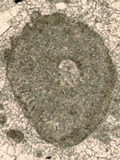 Abstract:
A review of eight lookalike fossil species led to their being synonymized. Although Marinella
lugeoni Pfender, 1939, is not the senior synonym, it is proposed to
ascribe it the status of a "nomen conservandum". The age of its
type-locality in Spain is Late Jurassic, not Early Jurassic. We also document
small Marinella lumps found in Albian-Cenomanian strata of Brazil. Abstract:
A review of eight lookalike fossil species led to their being synonymized. Although Marinella
lugeoni Pfender, 1939, is not the senior synonym, it is proposed to
ascribe it the status of a "nomen conservandum". The age of its
type-locality in Spain is Late Jurassic, not Early Jurassic. We also document
small Marinella lumps found in Albian-Cenomanian strata of Brazil.
|
|
Carnets Geol., vol. 16, no. 7, p. 231-245
Online since April 14, 2016
|
|
On the fossil alga Elianella elegans Pfender & Basse, 1948, and its so-called lookalikes, with description of Elianella brasiliana n.sp. Revision of the Juliette Pfender Collection. Part 1
Bruno GRANIER & Dimas DIAS-BRITO
| HTML  | PDF
| PDF  [2,885 KB]
| DOI:
10.4267/2042/59920 [2,885 KB]
| DOI:
10.4267/2042/59920
|
|
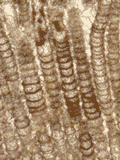 Abstract: According
to some authors, the three fossil algal forms discussed in this paper, Cordilites
cretosus (Reus, 1846), Elianella elegans Pfender & Basse,
1948, and Parachaetetes asvapatii Pia in Rao & Pia,
1936, are synonyms. However, we document that they represent three discrete
species. The genus Elianella Pfender & Basse,
1948,
gets unique features that make it easy to discriminate; we describe a new
species from Albian limestones of Brazil. The other two genera, Cordilites Počta,
1887, and Parachaetetes Deninger, 1906, share some common features,
such as having a thallus made of a lattice-network with columns
(filaments) and rows. However, on the basis of their diagnostic criteria, the
species Cordilites cretosus and Parachaetetes asvapatii should not
be confused. Abstract: According
to some authors, the three fossil algal forms discussed in this paper, Cordilites
cretosus (Reus, 1846), Elianella elegans Pfender & Basse,
1948, and Parachaetetes asvapatii Pia in Rao & Pia,
1936, are synonyms. However, we document that they represent three discrete
species. The genus Elianella Pfender & Basse,
1948,
gets unique features that make it easy to discriminate; we describe a new
species from Albian limestones of Brazil. The other two genera, Cordilites Počta,
1887, and Parachaetetes Deninger, 1906, share some common features,
such as having a thallus made of a lattice-network with columns
(filaments) and rows. However, on the basis of their diagnostic criteria, the
species Cordilites cretosus and Parachaetetes asvapatii should not
be confused.
|
|
Carnets Geol., vol. 16, no. 6, p. 213-229
Online since April 14, 2016
|
|
Revision of the Early Cretaceous genera Heminautilus Spath, 1927, and Josanautilus Martínez & Grauges, 2006 (Nautilida, Cenoceratidae)
Cyril BAUDOUIN, Gérard DELANOY, Josep Anton MORENO-BEDMAR, Antoine PICTET, Jean VERMEULEN, Gabriel CONTE, Roland GONNET, Patrick BOSELLI & Marc BOSELLI
| HTML  | PDF
| PDF  [34,156 KB]
| DOI:
10.4267/2042/58977 [34,156 KB]
| DOI:
10.4267/2042/58977
|
|
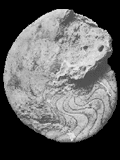 Abstract: In
spite of recent interest, the various species belonging to the genera Heminautilus Spath,
1927, and Josanautilus Martínez
& Grauges, 2006, have never been the object of a general
revision. More than 160 specimens belonging to various species of these two
genera were studied, with the aim of identifying the specific characteristics
and the stratigraphical and paleogeographical distribution of the various
species which compose them, as well as to propose a phylogeny for the group.
This study confirms the non-synonymy of Heminautilus saxbii (Morris,
1848) and H. lallierianus (Orbigny, 1841),
establishes that H. tejeriensis Martínez & Grauges, 2006, and
H. verneuilli (Vilanova, 1870) represent junior synonyms of H.
saxbii (Morris) and suggests the creation of the species H. ?
japonicus sp. nov. The
origin of the genus Heminautilus
Spath from Pseudocenoceras
Spath, 1927, proposed by Tintant, and the origin of Josanautilus
Martínez & Grauges
from Heminautilus Spath are both confirmed. Abstract: In
spite of recent interest, the various species belonging to the genera Heminautilus Spath,
1927, and Josanautilus Martínez
& Grauges, 2006, have never been the object of a general
revision. More than 160 specimens belonging to various species of these two
genera were studied, with the aim of identifying the specific characteristics
and the stratigraphical and paleogeographical distribution of the various
species which compose them, as well as to propose a phylogeny for the group.
This study confirms the non-synonymy of Heminautilus saxbii (Morris,
1848) and H. lallierianus (Orbigny, 1841),
establishes that H. tejeriensis Martínez & Grauges, 2006, and
H. verneuilli (Vilanova, 1870) represent junior synonyms of H.
saxbii (Morris) and suggests the creation of the species H. ?
japonicus sp. nov. The
origin of the genus Heminautilus
Spath from Pseudocenoceras
Spath, 1927, proposed by Tintant, and the origin of Josanautilus
Martínez & Grauges
from Heminautilus Spath are both confirmed.
|
|
Carnets Geol., vol. 16, no. 5, p. 61-212
Online since April 14, 2016
|
|
Sedimentologic study of palustrine continental carbonate deposits of the Tajerouine area, NW Tunisia
Naoufel GHANNEM, Faouzia TLILI, Chadia RIAHI & Kamel REGAYA
| HTML  | PDF
| PDF  [1,885 KB]
| DOI: 10.4267/2042/58976 [1,885 KB]
| DOI: 10.4267/2042/58976
|
|
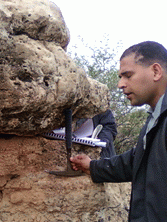 Abstract: The palustrine
limestones of Quaternary (Middle to the Late Pleistocene) age described in this
study are located in the
El Gara massif Tajerouine (Northwest of Tunisia). The study of these deposits at
different scales, both macroscopic (lithological description) and microscopic (petrography and
mineralogy), shows that they have a tabular structure and an angular unconformity
contact on the marly – calcareous series from the
Aptian-Albian. They show lateral and vertical changes in facies,
including conglomerates, limestones and stromatolites. Layer thickness tends
to increase gradually from East to West and also to the South of the study area.
Because of fluctuations in the groundwater table, these carbonates have
undergone periods of flooding and emersion, causing many pedogenic changes. The
nature of these changes was controlled by the height of emersion (nodulisation, roots traces, pseudo-microkarst).
These pedogenic changes in turn affected cementation during diagenesis (alternations
of phreatic cement), justifying the rock classification as palustrine
limestone. Abstract: The palustrine
limestones of Quaternary (Middle to the Late Pleistocene) age described in this
study are located in the
El Gara massif Tajerouine (Northwest of Tunisia). The study of these deposits at
different scales, both macroscopic (lithological description) and microscopic (petrography and
mineralogy), shows that they have a tabular structure and an angular unconformity
contact on the marly – calcareous series from the
Aptian-Albian. They show lateral and vertical changes in facies,
including conglomerates, limestones and stromatolites. Layer thickness tends
to increase gradually from East to West and also to the South of the study area.
Because of fluctuations in the groundwater table, these carbonates have
undergone periods of flooding and emersion, causing many pedogenic changes. The
nature of these changes was controlled by the height of emersion (nodulisation, roots traces, pseudo-microkarst).
These pedogenic changes in turn affected cementation during diagenesis (alternations
of phreatic cement), justifying the rock classification as palustrine
limestone.
|
|
Carnets Geol., vol. 16, no. 4, p. 43-59
Online since April 1, 2016
|
|
Lithothamnion crispatum: long-lasting species of non-geniculate coralline algae (Rhodophyta, Hapalidiales)
Giovanni COLETTI, Juraj HRABOVSKÝ & Daniela BASSO
| HTML  | PDF
| PDF  [2,096 KB]
| DOI: 10.4267/2042/58720 [2,096 KB]
| DOI: 10.4267/2042/58720
|
|
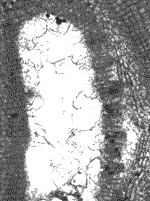 Abstract: The examination of fossil Lithothamnion specimens ranging in age from the Early Miocene to the
Pleistocene revealed the occurrence of multiporate conceptacle chambers pitted with depressions. This is the diagnostic feature of Lithothamnion crispatum, a cosmopolitan hapalidiacean with a wide depth range in
modern oceans. The comparison of the microscopic anatomy of both the fossil and
modern L. crispatum confirmed that they are conspecific. Therefore, this species has a long stratigraphic distribution starting at least 20
My ago, without significant morphological changes in either reproductive or vegetative anatomy. Abstract: The examination of fossil Lithothamnion specimens ranging in age from the Early Miocene to the
Pleistocene revealed the occurrence of multiporate conceptacle chambers pitted with depressions. This is the diagnostic feature of Lithothamnion crispatum, a cosmopolitan hapalidiacean with a wide depth range in
modern oceans. The comparison of the microscopic anatomy of both the fossil and
modern L. crispatum confirmed that they are conspecific. Therefore, this species has a long stratigraphic distribution starting at least 20
My ago, without significant morphological changes in either reproductive or vegetative anatomy.
|
|
Carnets Geol., vol. 16, no. 3, p. 27-41
Online since February 20, 2016
|
|
Insights into the permeability of polygonal faults from their intersection geometries with Linear Chimneys: a case study from the Lower Congo Basin
Sutieng HO, Daniel CARRUTHERS & Patrice IMBERT
| HTML  | PDF
| PDF  [483 KB]
| DOI: 10.4267/2042/58718 [483 KB]
| DOI: 10.4267/2042/58718
|
|
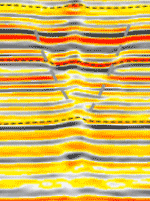 Abstract: Layer-bound arrays of polygonal compaction faults have long been considered as important migration routes for hydrocarbon fluids leaking to the surface across thick shale sequences. A classic example is the deep offshore of the Lower Congo Basin where numerous fluid-venting structures are present above a Pliocene polygonal fault system. In this paper we present a detailed seismic analysis of a newly recognised system of Quaternary-aged Linear Chimneys and their intersection geometries with pre-existing Pliocene-aged polygonal faults (PF). Most (73%) of the 209 chimneys analysed intersect the lower portions of polygonal faults and almost half of these are rooted in strata below the PF interval. This indicates that fluid (in this case gas) migrated vertically, cross-cutting polygonal faults as it ascended through the tier. This is a strong indicator that PFs did not provide viable migration pathways otherwise chimneys would terminate at the upper tip of the fault, which would be the most likely migration exit point. Only twice in the whole system of Linear Venting Systems did this occur. A sub-set of chimneys stems from or above PF planes but these are restricted to either the lower footwall or from the apex area of hanging wall. At best they are evidence of fluids migrating up the lower part of polygonal faults and exiting deep within the tier, then migrating through most of the tier in their own vertical leakage vents. These results provide strong indicators that at least within this part of the Lower Congo Basin polygonal faults were the least effective/favoured migration pathway and that it was more energy-efficient for migrating gas to hydrofracture its fine-grained overburden than to re-open polygonal faults. Abstract: Layer-bound arrays of polygonal compaction faults have long been considered as important migration routes for hydrocarbon fluids leaking to the surface across thick shale sequences. A classic example is the deep offshore of the Lower Congo Basin where numerous fluid-venting structures are present above a Pliocene polygonal fault system. In this paper we present a detailed seismic analysis of a newly recognised system of Quaternary-aged Linear Chimneys and their intersection geometries with pre-existing Pliocene-aged polygonal faults (PF). Most (73%) of the 209 chimneys analysed intersect the lower portions of polygonal faults and almost half of these are rooted in strata below the PF interval. This indicates that fluid (in this case gas) migrated vertically, cross-cutting polygonal faults as it ascended through the tier. This is a strong indicator that PFs did not provide viable migration pathways otherwise chimneys would terminate at the upper tip of the fault, which would be the most likely migration exit point. Only twice in the whole system of Linear Venting Systems did this occur. A sub-set of chimneys stems from or above PF planes but these are restricted to either the lower footwall or from the apex area of hanging wall. At best they are evidence of fluids migrating up the lower part of polygonal faults and exiting deep within the tier, then migrating through most of the tier in their own vertical leakage vents. These results provide strong indicators that at least within this part of the Lower Congo Basin polygonal faults were the least effective/favoured migration pathway and that it was more energy-efficient for migrating gas to hydrofracture its fine-grained overburden than to re-open polygonal faults.
|
|
Carnets Geol., vol. 16, no. 2, p. 17-26
Online since February 20, 2016
|
|
A simple technique to establish sequences of datums and to highlight transgressive–regressive cycles
Jean GUEX & Federico GALSTER
| HTML  | PDF
| PDF  [394 KB]
| DOI: 10.4267/2042/58207 [394 KB]
| DOI: 10.4267/2042/58207
|
|
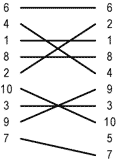 Abstract: The relative diachronism of first or last local occurrences (FOs and LOs) of fossil species may highlight transgressive/regressive cycles. A simple technique allowing the extraction of this information by means of the UAgraph program is discussed in the present paper.
The technique consists in modifying a usual database of UAgraph by augmenting it with the restricted data concerning only the FOs (or LOs) of the taxa under consideration. The resulting data set combines the information on total ranges and those concerning the FOs and LOs only. Calculating the UAs of such a duplicated database produce a range chart in which we can read the maximal ranges of all the taxa and, in addition, the biochronological dispersion of the FOs and LOs. For a given transgressive/regressive cycle, the UAs defined by the species related to sea level fluctuations migrate with time from distal to proximal sections and inversely. This trend can be detected visually by the means of the UAs reproducibility chart, output of the UAgraph program.
In a more general frame, the same holds true for species whose regional dispersion is related to specific conditions and when these conditions migrate in space with time (e.g., water temperatures and diatoms).
The above discussion is strictly related to FOs and LOs that for a given section are definitive, however well constrained ephemeral appearances and disappearances can be easily integrated in the database for the same purposes. Abstract: The relative diachronism of first or last local occurrences (FOs and LOs) of fossil species may highlight transgressive/regressive cycles. A simple technique allowing the extraction of this information by means of the UAgraph program is discussed in the present paper.
The technique consists in modifying a usual database of UAgraph by augmenting it with the restricted data concerning only the FOs (or LOs) of the taxa under consideration. The resulting data set combines the information on total ranges and those concerning the FOs and LOs only. Calculating the UAs of such a duplicated database produce a range chart in which we can read the maximal ranges of all the taxa and, in addition, the biochronological dispersion of the FOs and LOs. For a given transgressive/regressive cycle, the UAs defined by the species related to sea level fluctuations migrate with time from distal to proximal sections and inversely. This trend can be detected visually by the means of the UAs reproducibility chart, output of the UAgraph program.
In a more general frame, the same holds true for species whose regional dispersion is related to specific conditions and when these conditions migrate in space with time (e.g., water temperatures and diatoms).
The above discussion is strictly related to FOs and LOs that for a given section are definitive, however well constrained ephemeral appearances and disappearances can be easily integrated in the database for the same purposes.
|
|
Carnets Geol., vol. 16, no. 1, p. 1-16
Online since January 14, 2016
|
|
|
|